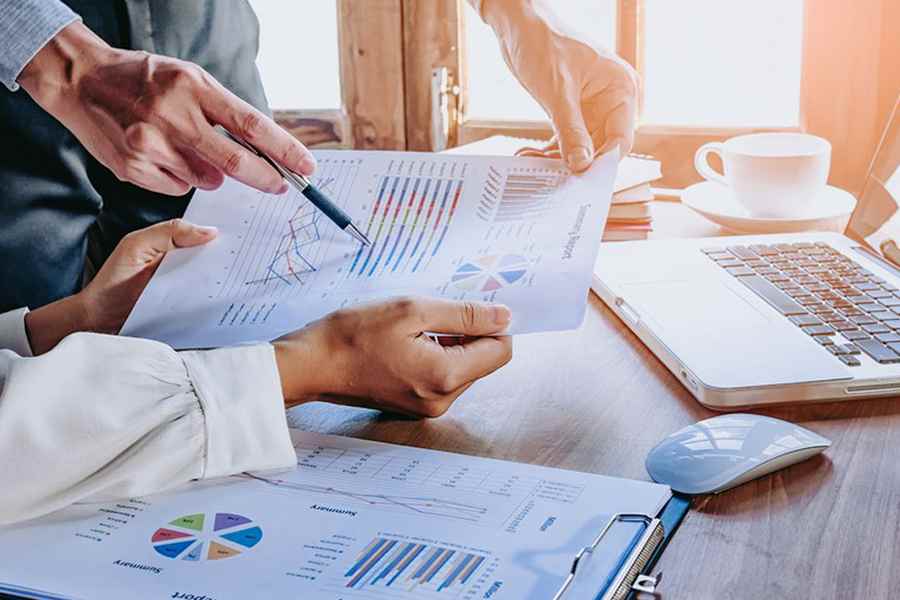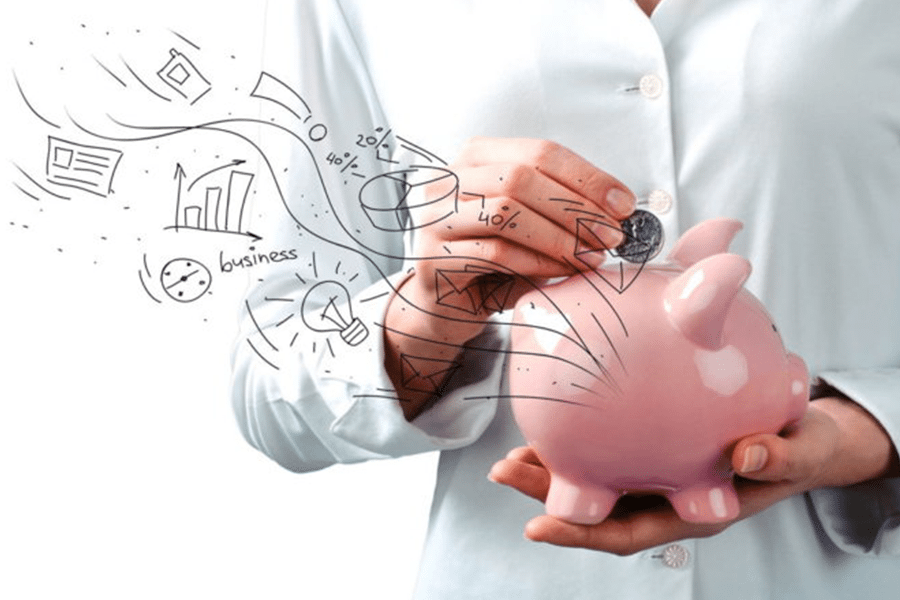Small Business Administration (SBA) loan interest rates are reviewed monthly and can vary depending on the type of SBA loan, the lender, and the required business qualifications. While these rates have been trending upward over the past few years, SBA loans are still one of the more affordable financing options that offer favorable rates and terms to qualified borrowers.
Below is a chart showing the current SBA loan rates for the various programs available.
SBA Loan Type | Loan Rates |
SBA 7(a) Variable | 11.50% to 15.00% |
SBA 7(a) Fixed | 13.50% to 16.50% |
SBA Express | 11.50% to 15.00% |
CDC Portion of CDC/504 loans | 6.201% to 6.476% |
SBA Microloan | 8% to 13% |
Varies; Up to 4% | |
Explore your SBA lending solutions now with Grasshopper Bank |
|
How SBA Loan Rates Are Determined
There are various factors that determine an SBA loan rate; inclusive of loan terms, business qualifications, and the current base rate. Depending on the loan program, rates and terms can vary, however, the base rate is determined by one of several publicly available benchmarks.
SBA loan terms to consider are whether the rate is fixed or variable, the repayment term, and the loan amount.
Loan Terms Overview | |
|---|---|
Fixed vs Variable Interest Rate | SBA loan programs can offer both fixed and variable interest rates, depending on your needs. Generally speaking, loans with a shorter repayment term have lower interest rates. |
Repayment Term | If you want to get the lowest rates possible, a variable interest rate is usually the best option. However, variable-rate loans can have changes in the rate and corresponding monthly payments at monthly or quarterly intervals. Fixed-rate loans, on the other hand, will have the same monthly payment for the life of the loan. |
Loan Amount | For many SBA loans, higher loan amounts carry lower interest rates. However, this may not always be the case and can vary depending on the lender you choose. Keep in mind, there are various maximum loan limits applicable to SBA loan programs. |
Qualification criteria will consist of elements such as your credit score, time in business, and business revenue. The stronger your business is within these criteria, the more likely you’ll be able to qualify for the best possible rates. The following are areas of your business that are commonly considered in determining not only the rate you get, but your chances of approval:
- Credit score (personal and business): A credit score is designed to show how likely you are to continue making timely loan payments. To learn more about common personal credit scoring models, you can head over to our guide on what a bad credit score is. We also provide guidance on how you can get a good business score in our article on how business credit scores work.
- Debt service coverage ratio (DSCR): DSCR is calculated by dividing your company’s net operating income by the current year’s debt obligations. It is used as one tool to evaluate your company’s ability to repay debt. In general, you should aim for a DSCR ratio of 1.25 or greater. Learn more about it in our guide on DSCR, which includes a DSCR calculator.
- Time in business: Companies that have been operating for less than two years are classified as startups and may not be able to qualify for the best rates. This is because startups have a high failure rate and are therefore seen as more of a risk.
- Business revenue: Some lenders have minimum revenue requirements to even be considered for a loan. In most cases, you’ll need to exceed these minimums to get the lowest advertised rates.
- Business type: Some loans, such as SBA EIDL loans, offer lower interest rates for nonprofit businesses versus those operating as for-profit companies.
Lenders can choose from one of several publicly available benchmarks to use as the base rate. These include the Prime Rate, Secured Overnight Financing Rate (SOFR), and the SBA’s price/earnings to growth (PEG) rate.
Base Rates as of July 17, 2024 | |
|---|---|
Base Rate Name | Rate Name |
Prime Rate | 8.50% |
SOFR | 5.35% |
SBA PEG Rate | 4.63% |
As of June 30, 2023, LIBOR will be replaced by the Secured Overnight Financing Rate (SOFR). LIBOR has been slowly phased out over the past several months. The one-week and two-month LIBOR rates were retired on Dec. 31, 2021, while the one-, three-, six-, and 12-month rates will be retired at the end of June.
SBA 7(a) Loan Rates
Although rates can vary among lenders, the SBA does set maximum rates that can be charged. The maximum SBA loan rates for a 7(a) loan are listed below and can vary depending on the specific terms you want.
SBA 7(a) Loan Uses
SBA 7(a) loans are the most common type of SBA loan program used by small businesses. Since they can be used for almost any business-related purpose, they can provide for a variety of working capital and long-term financing needs. That said, applicable uses for loan proceeds can include:
- Purchasing equipment, machinery, fixtures, supplies, and materials
- Acquiring real estate, including land and buildings
- Paying for construction or renovation costs for real estate
- Refinancing existing business debt
- Purchasing another business as part of an acquisition or merger
- Financing working capital
- Acquiring land or making site improvements
SBA Express Loan Rates
SBA Express loans are part of the SBA 7(a) loan program. They offer faster approvals in exchange for higher interest rates since the program allows designated lenders to utilize their own approval processes in exchange for a lower SBA guaranty percentage. Decisions can be made within 36 hours, and you can receive up to $500,000 on an SBA Express loan.
Maximum SBA Express Loan Rates as of July 18, 2024 | |
|---|---|
Loan Amount | Loan Rate |
$50,000 or less | 15.00% (prime + 6.5%) |
$50,001 to $250,000 | 14.50% (prime + 6.0%) |
$250,001 to $350,000 | 13.00% (prime + 4.5%) |
Greater than $350,000 | 11.50% (prime + 3.0%) |
SBA Rates on CDC/504 Loans
An SBA 504 loan consists of two loans: one portion comes from a bank while the second comes from a certified development company (CDC) These organizations provide programs and services that support local community development opportunities. .
- Bank loan (can be variable or fixed rate): This is typically provided for up to 50% of the loan you’ve requested. Rates are determined by the bank, but because this type of loan is secured by some form of real estate, rates are typically low to reflect the reduced level of risk to the bank.
- CDC loan (fixed rate only): This portion is granted for up to 40% of the price of the land, equipment, or other real estate for which you need funding. The SBA does dictate the maximum interest rates that can be charged for this portion of the SBA 504 loan.
SBA Rates for CDC/504 Loans as of July 18, 2024 | |
|---|---|
Loan Term | Loan Rates |
10-year Term | 6.476% |
20-year Term | 6.270% |
20-year Term Refinance | 6.300% |
25-year Term | 6.201% |
25-year Term Refinance | 6.230% |
SBA 504 Loan Uses
SBA 504 loans are applicable to financing opportunities that will help create or promote job growth. Loan proceeds are usually provided for major fixed assets that are essential for business purposes. Some examples of what you can do with the proceeds from an SBA 504 loan are:
- Purchasing or building offices or land
- Acquisition of machinery or equipment
- Improving land, streets, utilities, and landscaping
- Renovating existing facilities
SBA Microloan Rates
Interest rates for SBA microloans can vary but are generally anywhere from 8% to 13%. They also have a maximum repayment term of six years. They are offered through SBA-appointed intermediaries, and rates can vary depending on the lender. To find a participating lender, you can view the SBA’s list of microlenders.
SBA Microloan Uses
SBA microloans offer up to $50,000 in funding, although the SBA states that the average microloan is around $13,000. These loans are best suited for small businesses that don’t need a large amount of capital, and they can be used for a wide range of business purposes with the exception of paying off existing debts or acquiring real estate.
Below are some examples of what you can use an SBA microloan for:
- Working capital
- Supplies
- Inventory
- Furniture and fixtures
- Machinery and equipment
SBA Economic Injury Disaster Loan (EIDL) Rates
SBA EIDLs are issued to businesses that have been affected by a natural disaster and are unable to get financing elsewhere. Loan rates are favorable and not to exceed 4%, and loan amounts are based on the actual economic injury of your business, regardless of property damage.
EIDL Rates & Terms | |
|---|---|
Maximum Loan Amount | Up to $2 million |
Repayment Term | Up to 30 years |
Interest Rate | Up to 4% |
Deferral of Payment | 12 months |
SBA EIDL Uses
Funds can be used to pay for business-related expenses that you otherwise would have been able to cover prior to a disaster. Some examples include:
- Payroll expenses
- Healthcare benefits
- Rent and utilities
- Debt payments
- Equipment repairs
Frequently Asked Questions (FAQs)
The application process for an SBA loan is a bit lengthier than loans offered by other lenders due to their government-backed nature. That said, it’s generally easier for small businesses to meet the qualifications required of SBA loans, in comparison to stricter criteria required of banks or online lenders. Regardless, we recommend reading our tips on how to get a small business loan, where we discuss how you can prepare and submit a loan application.
SBA loans typically offer more competitive rates and terms than other types of conventional small business loans. While loan rates can vary depending on the lender and loan details, SBA loans, in general, tend to have lower rates and can be more cost-effective.
Depending on the loan program you choose, most SBA loans require collateral even though they are government-backed. There are exceptions to some programs, such as an SBA 7(a) loan, which doesn’t require collateral for loans under $50,000.
Bottom Line
SBA loan interest rates can vary depending on the type of loan program, loan details, and qualification criteria. SBA loans generally offer some of the lowest rates available when compared to other lenders. By utilizing the current rates, you can decide whether or not an SBA loan may fit your budget and provide for your business needs.


